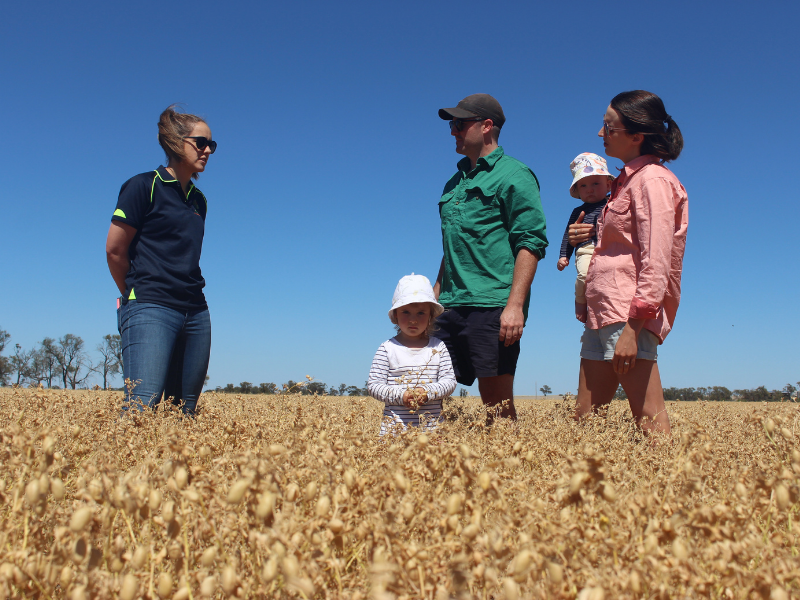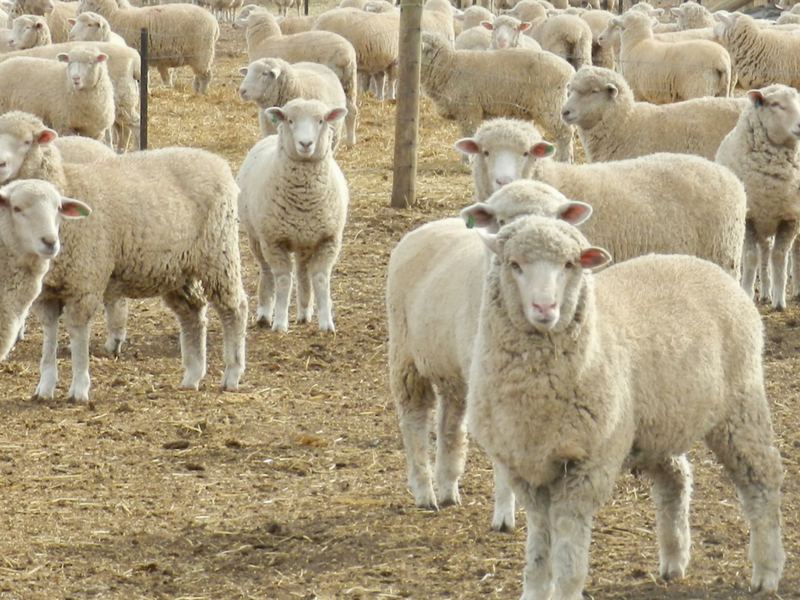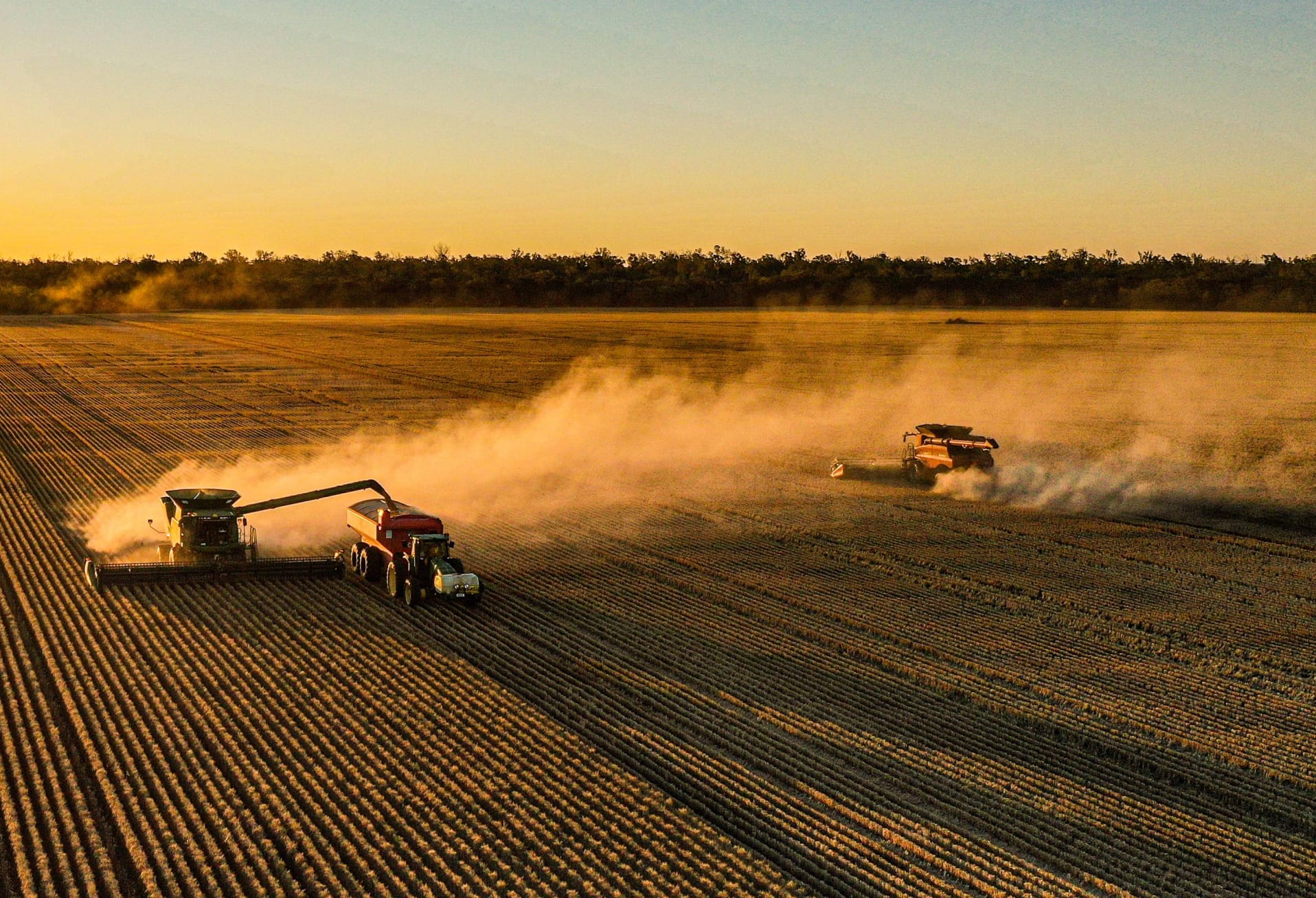Deep sowing and long coleoptile varieties to enhance early sowing opportunities and improve drought resilience
As growers, we know that early sowing has shown to significantly increase yields across Australia. Successful early sowing usually relies on an initial rainfall event for optimised germination and establishment. However, this seasonal break is becoming less predictable, and can be followed by weeks of dry weather.
With an increase in summer rainfall across the Australian wheatbelt, soils have potential to retain subsurface moisture deeper than 50mm from summer rain events, allowing for earlier moisture availability at depth during the sowing window, and prior to the season break.
BCG Project Lead Researcher Brooke Bennett said this is where long coleoptile varieties and deeper sowing methods come in; “this allows growers to sow and establish a crop prior to the season break, potentially extending the length of the growing season and offering yield benefits. These practices are particularly important in drier or drought conditions, where a dry surface soil would otherwise delay or limit sowing altogether”.
Moisture seeking is not the only fit that long coleoptile wheats have in a farming system. Other scenarios that could potentially benefit from these genetic traits are where furrow in-fill is likely to occur between sowing and emergence as a result of wind events, or in areas where significant soil amelioration practices have occurred, and it is more difficult to control seed placement at sowing (such as deep ripping or delving). Research is also looking to identify the function of these varieties in managing herbicide separation from seed, and impacts on root/crown diseases.
To explore these opportunities, in collaboration with CSIRO, BCG implemented a 1-year trial at the Kinnabulla main site, comparing nine different wheat varieties at a depth of 30-50mm and 100-120mm, including varieties Calibre, LRPB Bale, LRPB Dual, Mace18, Valiant CL Plus, Yitpi, Mace, Magenta, Cutlass, and Scepter as a control. Morava (vetch) and PBA Hallmark XT (lentil) were also trialled, given their popularity amongst growers in the region.
“Pulses such as lentils and vetch can be sown at depth and emerge well, so a small trial was also established at Kinnabulla to demonstrate to growers a pulse crops ability to be sown deep for access soil moisture” Ms Bennett explained.
Similar work is being delivered in a further five locations across the southern and western grain growing regions, and will provide a good overview on the fit of long coleoptile varieties, as well as key opportunities and challenges.
For growers to better understand this genetic wheat trait, below are some key messages on long coleoptile function and management:
What is the coleoptile?
The coleoptile is the protective sheath that encases the first leaf/shoot and increases its ability to push through the soil, at which point, the first leaf unfurls and begins to function.
What factors influence coleoptile length?
Genetics, temperature, seed size and quality all influence coleoptile length. Over time, varieties desired by growers have innately selected for shorter coleoptiles. However, research suggests that this can be adjusted by selecting for the right genes, and that coleoptile length can be longer in currently commercially accepted varieties. This research continues.
Temperature is a key driver to coleoptile length. Growers are aware of potential yield benefits when sowing early, but this practice can be challenging at an increased depth, as warmer conditions can lead to a shortened coleoptile. It is suggested that longer coleoptiles would alleviate this issue.
As with some other attributes associated with establishment, coleoptile length is also influenced by grain quality. Larger, plumper grain will result in increases in coleoptile length, but is of a smaller influence than genetics and temperature.
If I grow a long coleoptile variety, do I have to sow it deep?
The answer is no. The coleoptile is also light sensitive, so you can sow a long coleoptile variety at a shallower depth when conditions allow. Once the coleoptile reaches the surface, it will open up to let the first leaf through. These varieties are not locked into deep sowing.
Does soil type have an influence?
Potentially, but for reasons not exclusive to a long coleoptile. Heavier soils, or soils with constraints (sodicity/hard setting) can generally be more difficult to establish crops in. While long coleoptiles can offer some opportunities, there is still a need for the seeding equipment to be able to effectively place the seed in the ground and leave a suitable seedbed. This is an area of research still being developed, and may emerge from some of the trial that were placed on heavier soils this season.
FarmLink hosted a webinar that provides additional information on the relevance of long coleoptile wheats in a cropping system, and the direction of this research.
We are currently processing harvest results from this trial, which will be presented at BCG’s Trials Review Day and made available via our BCG Season Research Results compendium to be distributed to members in early 2024.


Photographs by Brooke Bennett of BCG’s long coleoptile/deep sowing trial.
This project is supported by BCG, through funding from the Australian Government’s Future Drought Fund and CSIRO.















